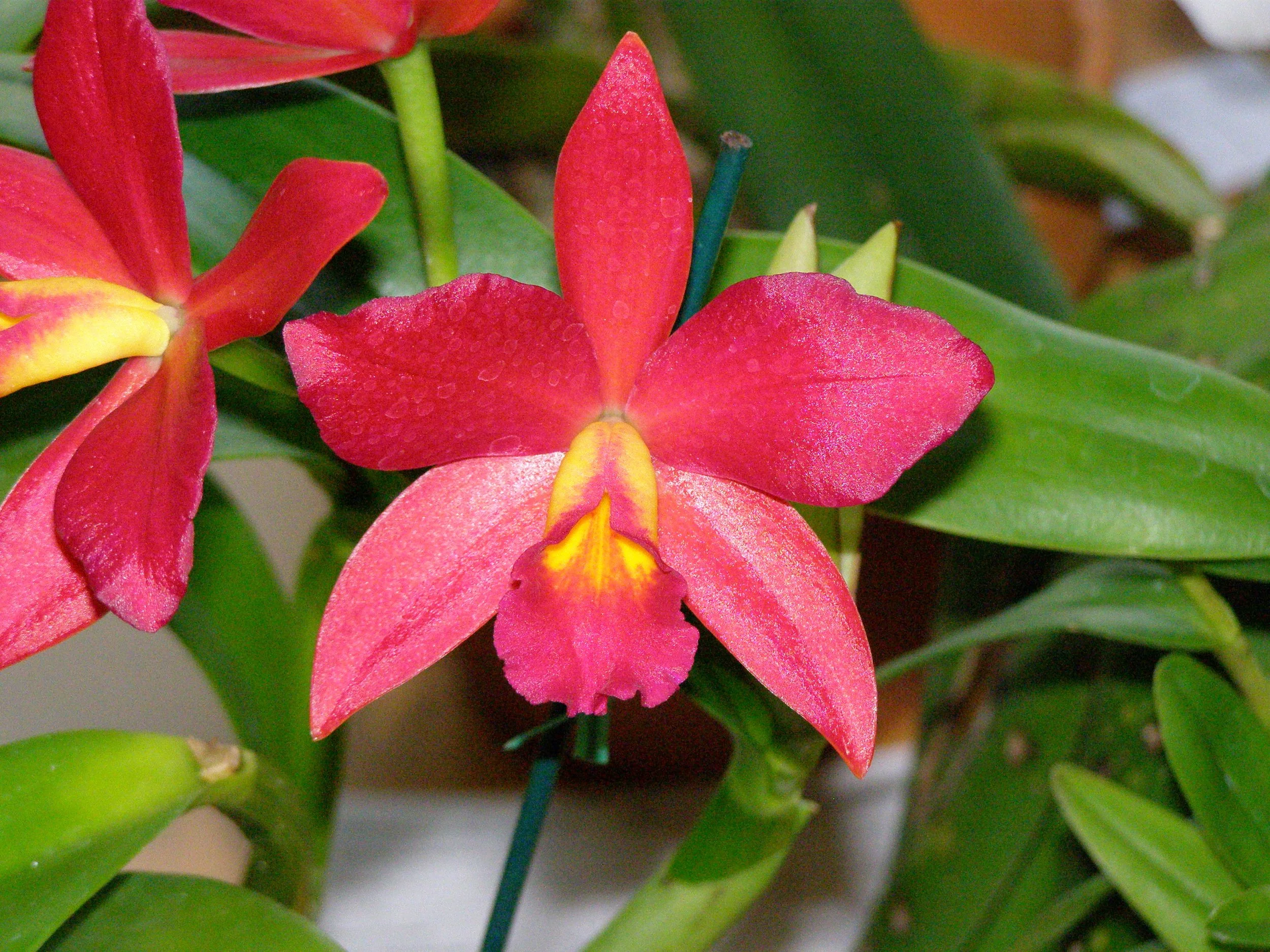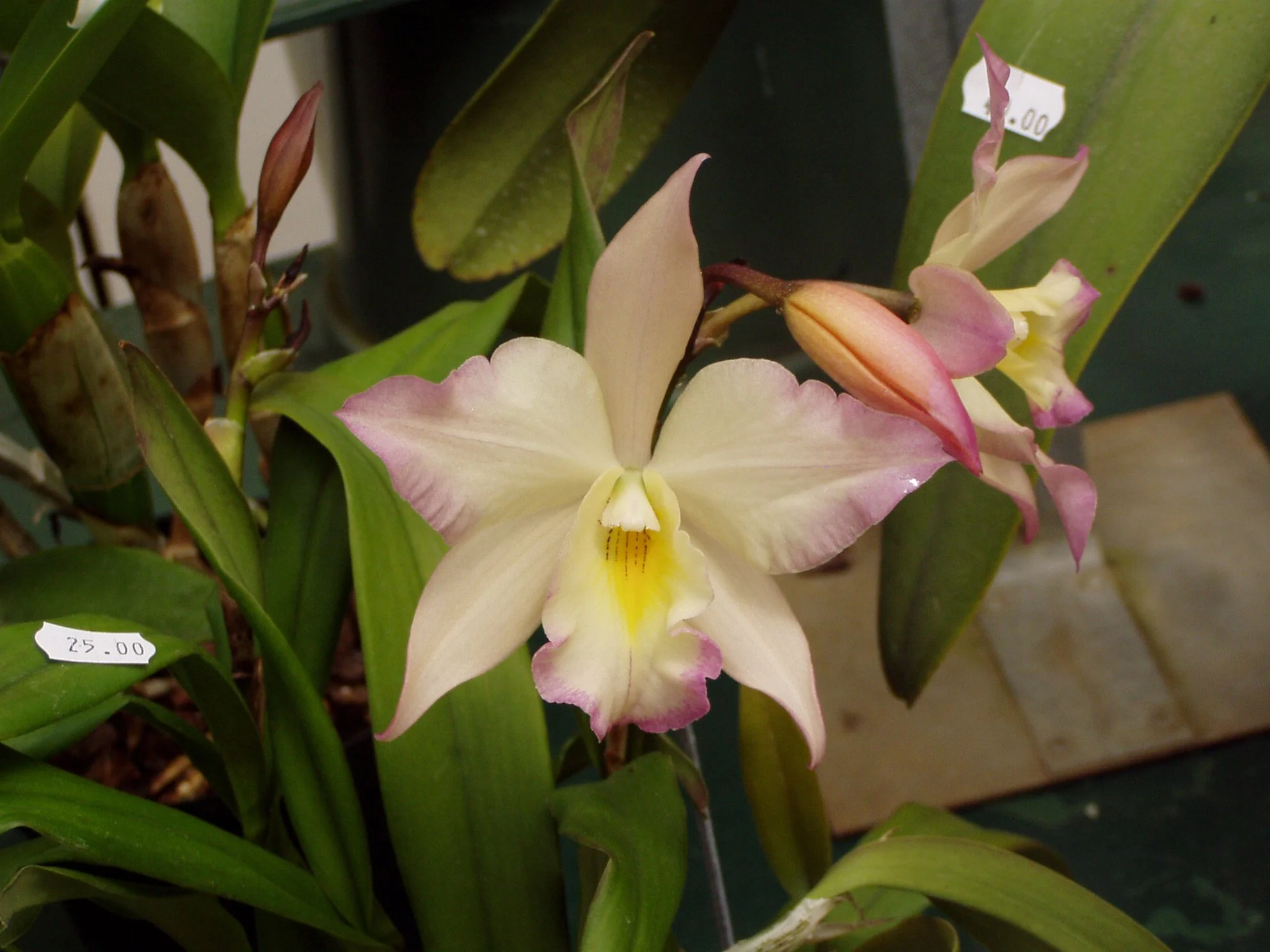Cattleya Culture Sheet
How to Grow Cattleya Orchids
-
Cattleya orchids require brighter light to grow and flower than other orchids, but avoid direct sun.
Window: Place cattleyas in a bright east, west, or south window, but watch for signs of developing sunburn. This will appear initially as a yellowing or tan patch facing the source of light. A sheer curtain can be used to protect from sun damage.
Artificial light: High-pressure sodium lights, fluorescent and compact fluorescent lights, and LED lights can all be used to grow cattleya orchids. Place cattleya orchids closer to the middle of the growing bench, and move plants with lower light requirements closer to the ends.
Outdoors: Like most orchids, cattleyas benefit from being moved outdoors after nighttime temperatures remain above 60 degrees. Plants may need to be acclimated gradually to brighter conditions, and should be kept out of hot sun.
-
Cattleya orchids thrive in intermediate to warm temperatures, and are not tolerant of prolonged dips into the 50s and 60s Fahrenheit. A combination of bright light and excessive heat may result in sunburn, which will appear initially as a patch of yellow, tan, or white discoloration, fading to light tan and forming a dry patch. Check plants regularly for sunburn.
-
Cattleya orchids want to be watered very heavily on watering day, and then dry out before being watered again. Cattleya roots will rot if kept wet for too long, or if suffocated by wet media. To water at a sink, run a tap of room temperature water, and hold the pot in the water, moving it so that the entire pot is thoroughly flushed with water to thoroughly drench the medium. Allow the pot to drain, and place back into the growing area. This is an ideal time to check for sun damage, pests, and other developing problems.
-
Formula: Cattleya orchids benefit from a higher nitrogen fertilizer formula such as 30-10-10, but can also be given a balanced fertilizer. The formula of fertilizer required will change depending on the amount of dissolved minerals in your local tap water. Water with high total dissolved solids (TDS) will require fertilizer without these additional minerals, or it may burn the roots. Water with low dissolved magnesium and calcium will require a formula that supplements these essential minerals. The Chicago municipal water supply is very good for growing orchids.
Schedule: Most orchid growers follow a “weakly-weekly” fertilization schedule, and will use ¼ of the package recommended strength, every time they water. Some growers will decrease or discontinue fertilization from late fall to early spring, or when the plant is not actively growing, while other growers may feed evenly year-round. Some growers report success switching to a “bloom booster” formulation in the months leading up to that orchid’s blooming season. Flush the pot with plain water without fertilizer once every month to avoid the buildup of fertilizer salts.
-
Cattleya orchids do not require a dry dormancy or rest period, although their water needs will change with the amount of light provided as seasons change. Some Cattleyas may require less water immediately after they finish blooming.
-
Use a coarse, free draining potting medium like fir bark or a fir bark mix. Due to Cattleya orchids’ sensitivity to being repotted, selecting an inorganic medium such as limestone rock, lightweight expanded clay aggregate (LECA) or Hydroton, or large size Kiwi bark (Pinus radiata) or douglas fir bark may result in not having to disturb the roots as often. Some growers have success using LECA or Hydroton in a container that keeps a small reservoir of water, in a method called semi- hydroponic.
Care requirements created with information from the American Orchid Society, and Illinois Orchid Society growers.




